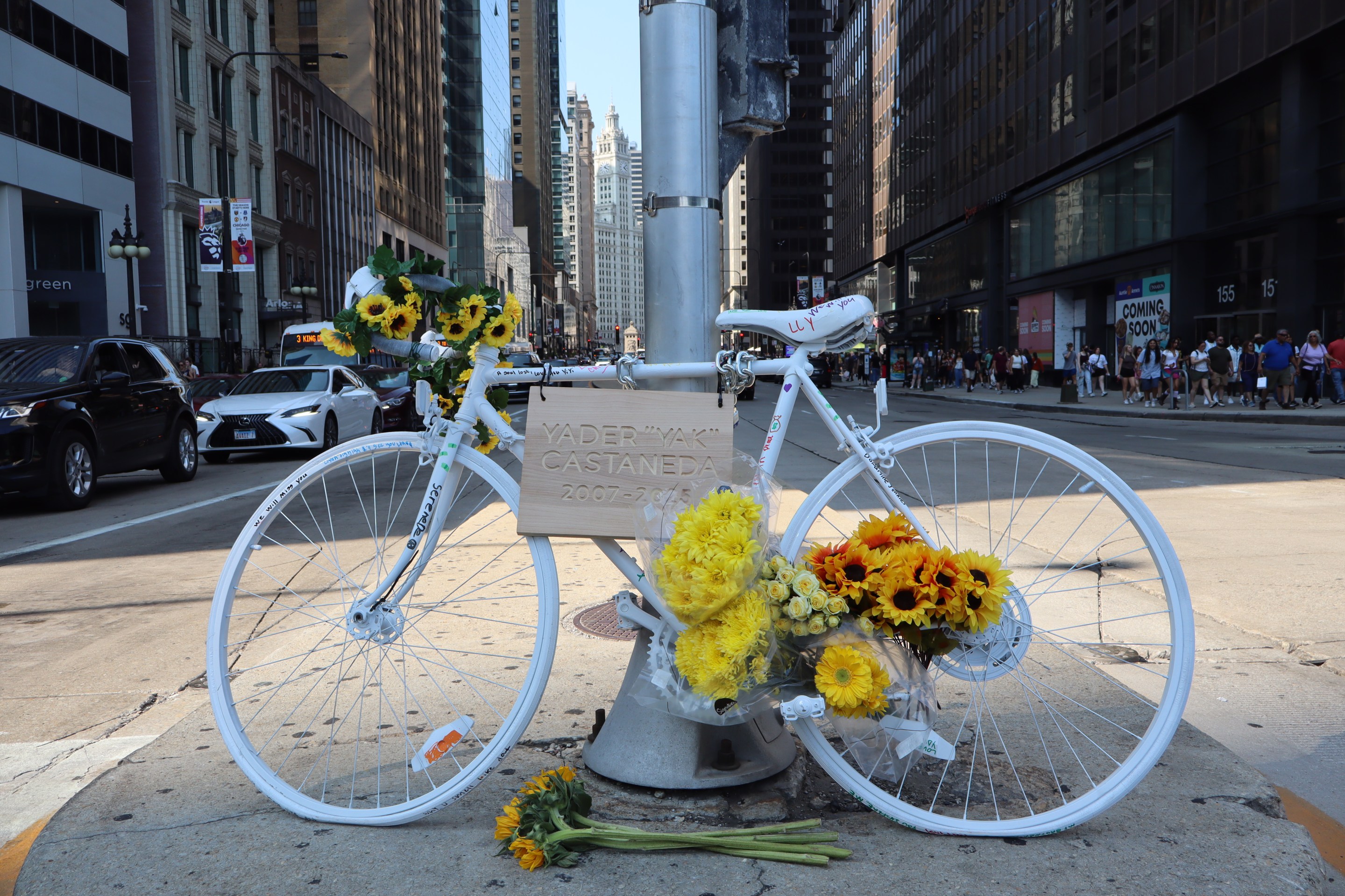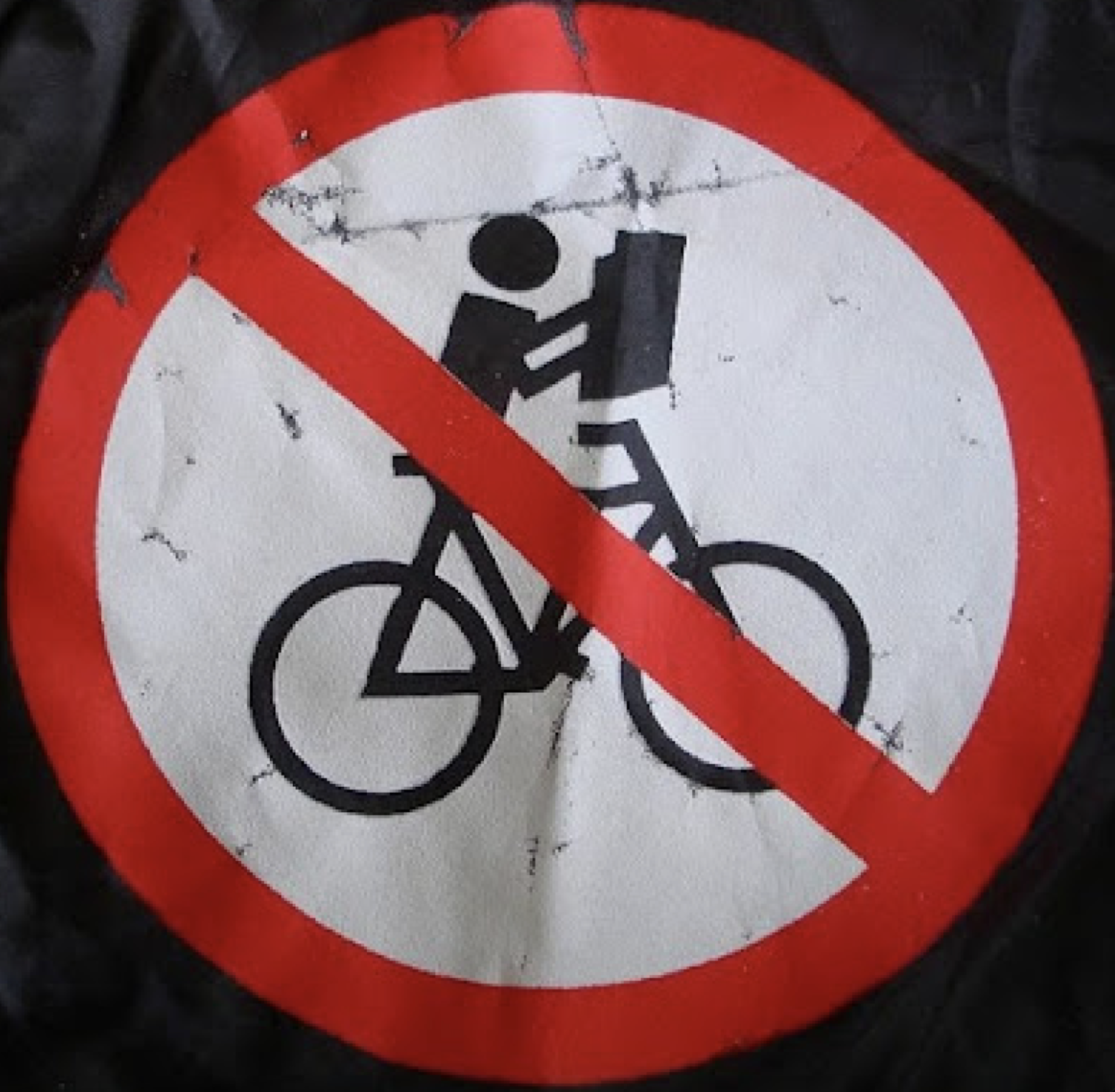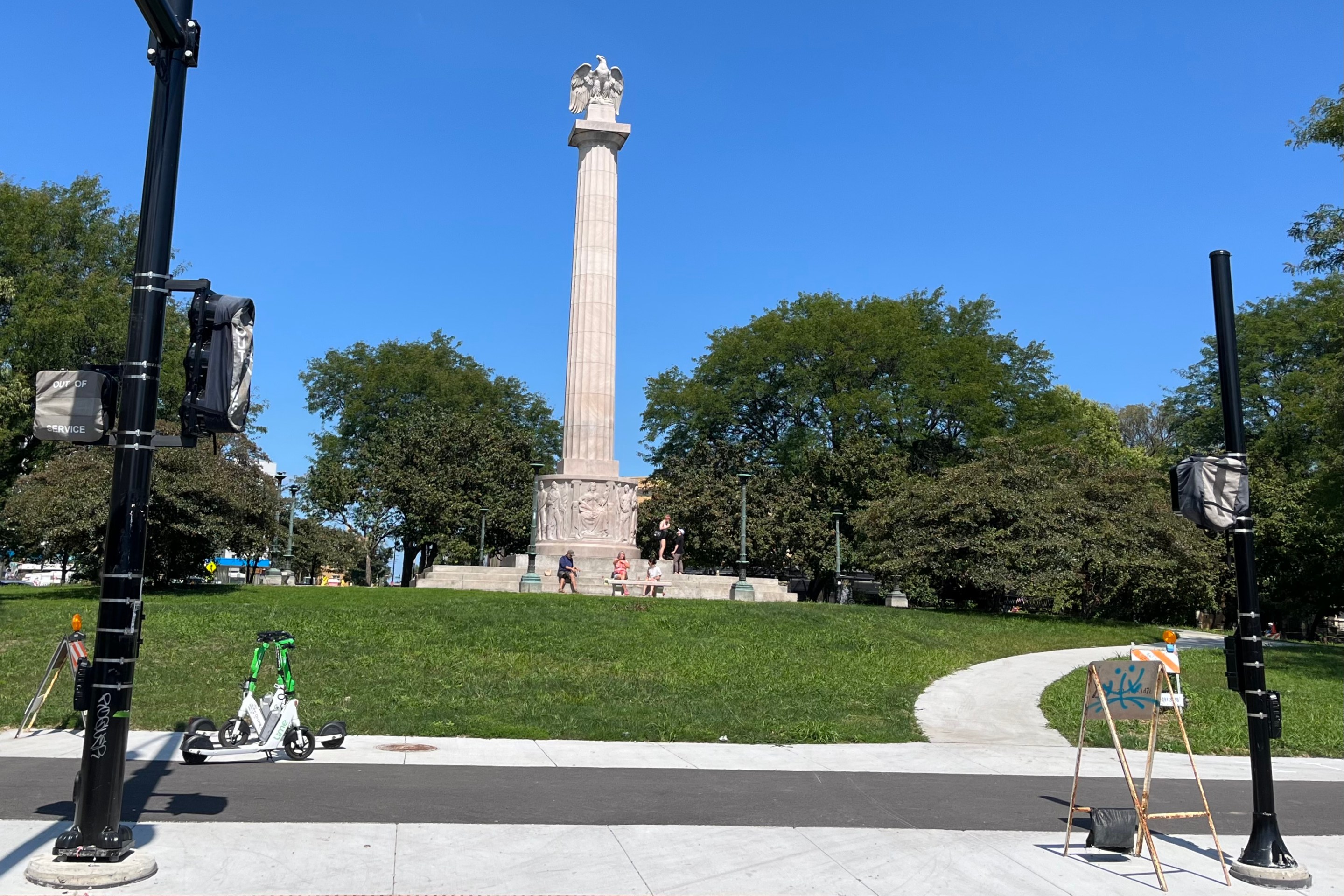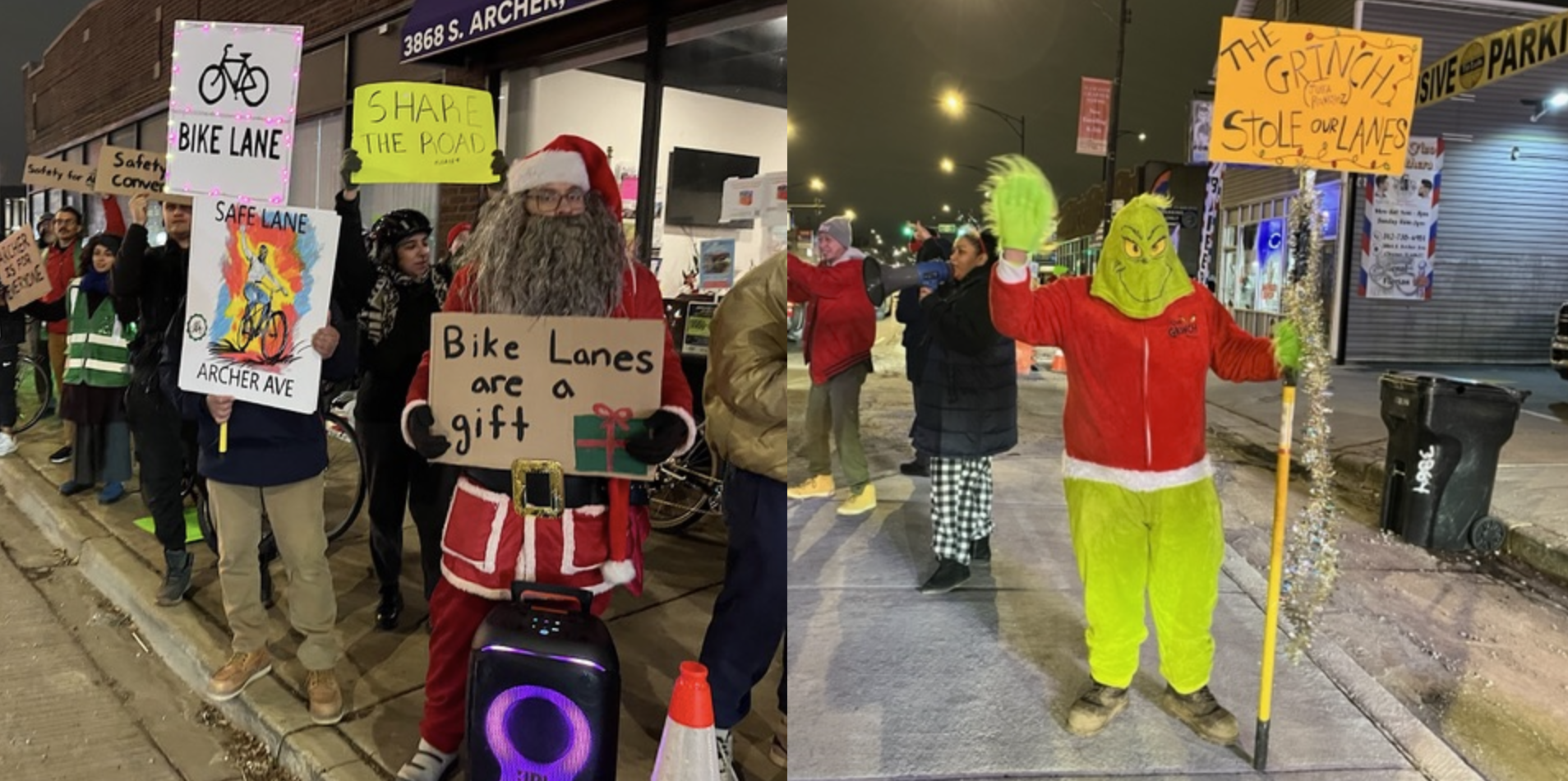Yesterday, family members, friends, and supporters gathered to install a "ghost bike" memorial to fallen cyclist Yader "Yak" Casteneda, 18 at Randolph Street and Michigan Avenue in the Loop. In speeches during the vigil, his loved ones remembered him as an ambitious, hard-working person, and a supportive brother and friend, who lit up a room with his presence.

Last Memorial Day, Castaneda attempted to ride across the complex, dangerous intersection on an electric Divvy bike. He was fatally struck by the driver of a 2024 EV Hummer, one of the heaviest consumer motor vehicles currently on the market.
According to police, in the early morning of Monday, May 26, Castaneda was cycling west on Randolph with friends. As he crossed the ten-lane avenue, Peter Aleck, 65, drove his roughly 10,000-pound vehicle south on Michigan and collided with him. Castaneda was taken to nearby Northwestern Memorial Hospital, where he was pronounced dead an hour later.
Aleck reportedly had a green light, but responding officers clearly believed his behavior played a role in the crash. The Illinois Traffic Crash Report they completed states that the driver was distracted, and he was ticketed for failure to reduce speed to prevent a crash. Moreover, the poor sight lines and massive weight of his SUV greatly increased the chances of a deadly collision.

The bicyclist-and-pedestrian-hostile design of the huge road junction also made this tragedy more likely. Not only do both streets have many lanes, but Randolph more than doubles in width east of the intersection, and Michigan also widens south of it, creating a confusing layout.
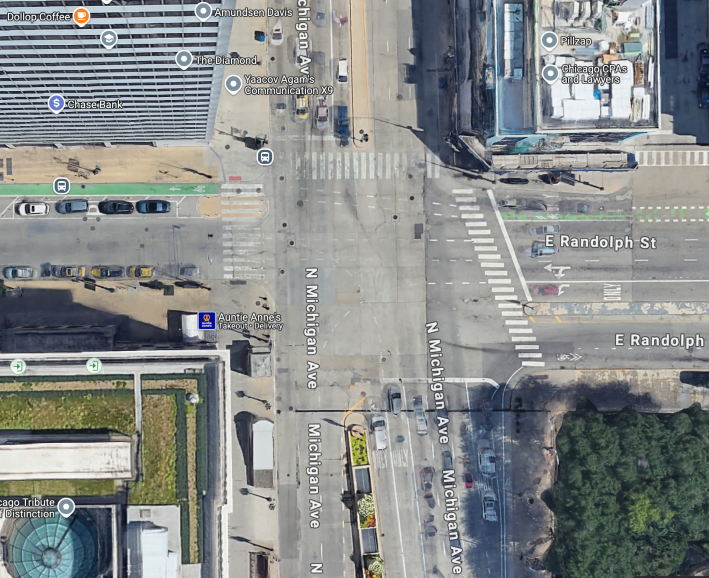
Randolph Street has bike lanes on both sides of Michigan, but only the bikeway west of the junction is physically protected. Westbound cyclists on Randolph are routed to the left side of a right-turn lane at Michigan for drivers. After that, dashed pavement markings direct bike riders across the avenue at an angle, to the curbside protected lane on the other side.
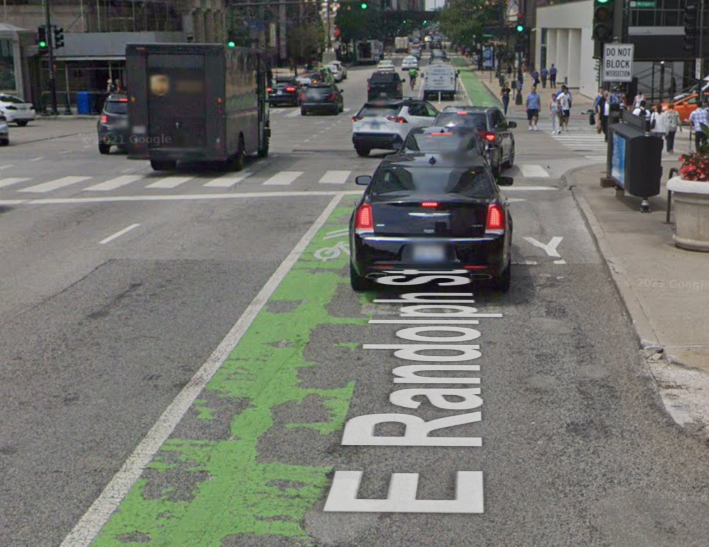
The intersection is also dangerous and complicated for pedestrians. Years ago, in order to make left turns more convenient for drivers heading south on Michigan from Randolph, the City eliminated the crosswalk on the south leg of the junction. That means people walking between the Chicago Cultural Center, at the southwest corner, and Millennium Park, at the southeast corner, can't travel in a straight line. Instead, they must take a circuitous route with three street crossings.
Castaneda, who lived in southwest-suburban Plano, had recently graduated from high school and worked as a barber in nearby Yorkville. During the ceremony at the northeast corner of Randolph/Michigan, many of his family and friends wore t-shirts with his image. Others wore yellow shirts and brought sunflowers, because yellow was the young man's favorite color.
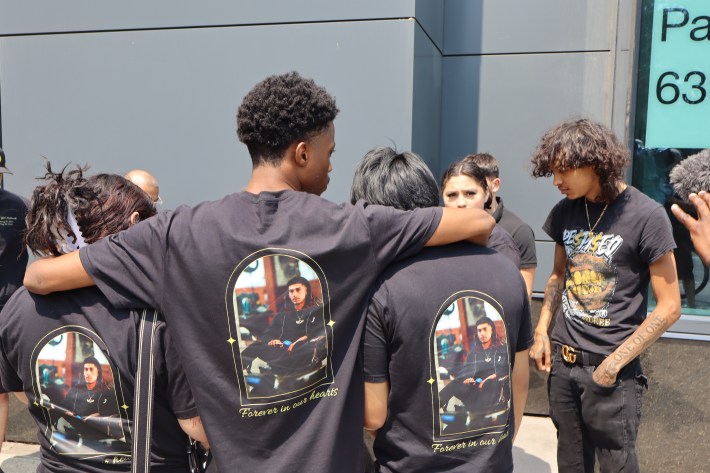
Bike Lane Uprising, which fights dangerous bikeway obstructions, helped organize the event, and the family invited cycling advocates to attend. More than ten people showed up on bikes.
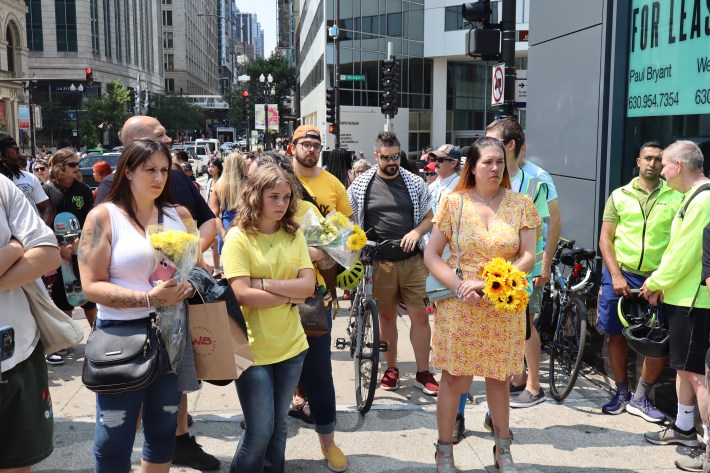
Castaneda’s friend Chris Wallace, didn’t try to hold back tears as he talked about the impact of the death. "I find myself in disbelief that someone so full of life is could, could be taken from us so soon," he said. "Your sisters, your brothers, your friends speak of you with so much love, as if you were here, as if you never left, because you live on in our memories. Your strength, your love, your legacy, they live on in us. Please keep watching all over us. We miss you more than words can say."
Castaneda’s friend and co-worker Jesús, who didn’t give his last name, was also on the verge of tears as he talked about the difficulty of accepting that Castaneda is gone. "I was never sad around him," he said. "He brightened up every room he was in. He was the... the toughest person I ever knew. He was the hardest worker I knew. He was the first at the barbershop every day. I miss him. Not a day goes by that he’s not on my mind."
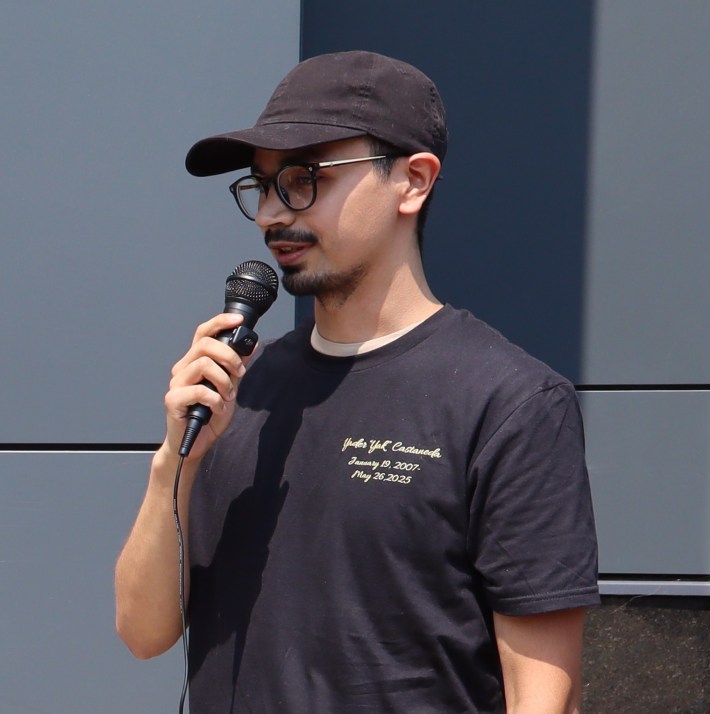
Frank Castaneda, Yader Castaneda's older brother, said that even though his sibling was younger, he "inspired me so much" with his maturity and work ethic. "In those short 18 years, he chased after his goals, he hustled as much as he could. It’s too soon. He should have lived much longer than that."
During the ceremony, Whitehouse said that Castaneda's death wasn’t simply an isolated incident, but rather a predictable outcome product for a junction with a dangerous layout for people biking and walking. She noted that in recent years Bike Lane Uprising has installed three ghost bikes downtown. "It could’ve been us, it could’ve been you," she said. "We want to acknowledge that this is not a safe [intersection].”
After the speeches, Whitehouse and Castaneda’s loved ones took the ghost bike, featuring a wooden panel with the fallen cyclist's name, and attached it to a traffic light pole on the median in the north leg of the intersection. Several attendees either tied sunflowers to the bike or left them at the foot of the cycle.
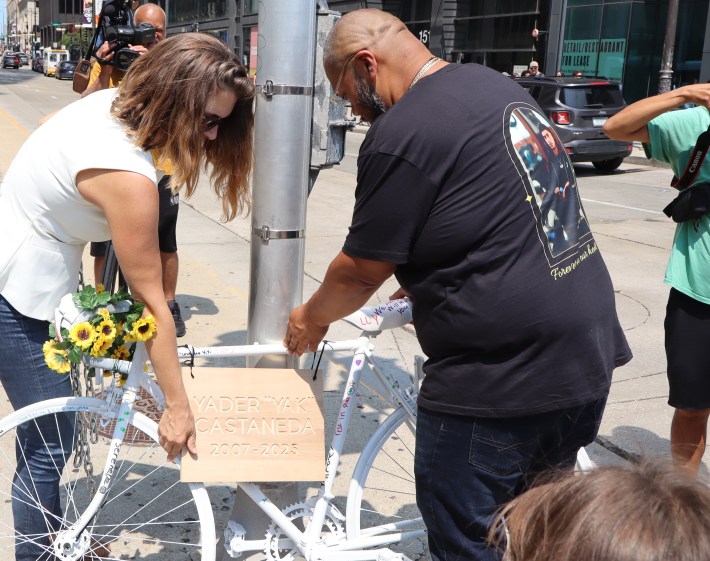
Whitehouse said she expects that Bike Lane Uprising will eventually have to replace the ghost bike, because it's likely a reckless driver will destroy it, as has happened at other cycling fatality sites. But when I visited Yader Castaneda's memorial again two hours later, the bike, and the flowers, were still untouched.

Do you appreciate Streetsblog Chicago's reporting and advocacy on local sustainable transportation issues? If you haven't already, please consider making a tax-deductible donation here to help us continue publishing in 2026. Thank you.
